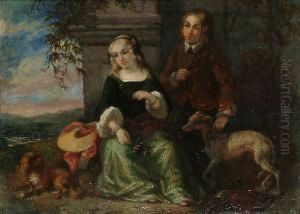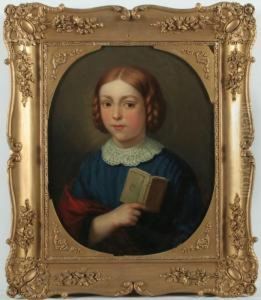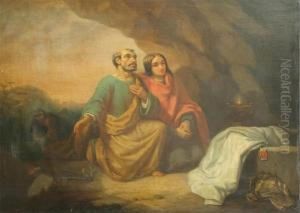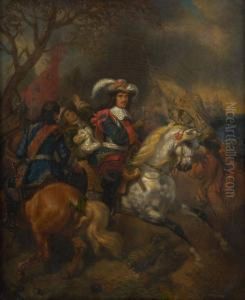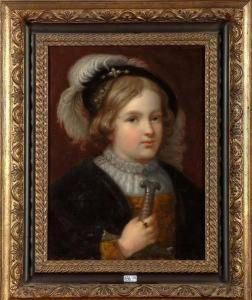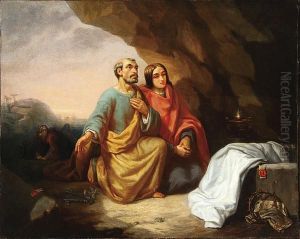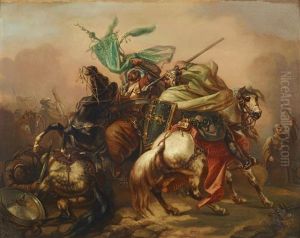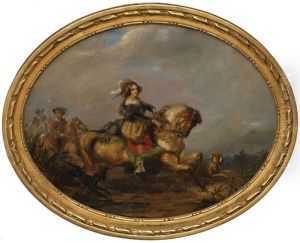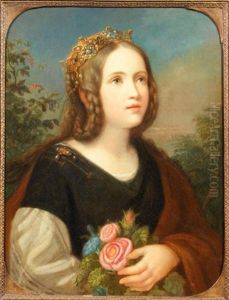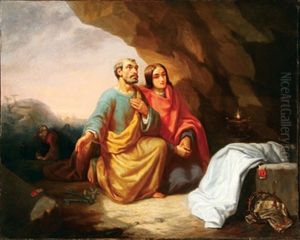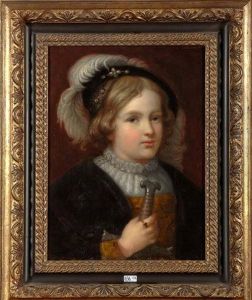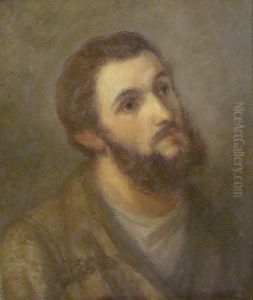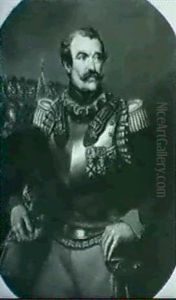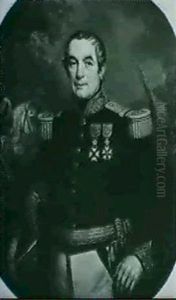Theodore Schaepkens Paintings
Theodore Schaepkens was a Belgian artist born on August 8, 1810, in Maastricht, which at the time was transitioning from French to Dutch control following the Napoleonic Wars. He was part of the Romantic movement, a period that emphasized emotion and individualism as well as glorification of the past and nature, reacting against the Industrial Revolution and the aristocratic social and political norms of the Age of Enlightenment. Schaepkens was primarily known for his historical paintings, landscapes, and portraits, but he also had an interest in ecclesiastical art, contributing significantly to church decorations and religious artworks during his career.
Schaepkens' education in art began in his hometown of Maastricht but he further honed his skills in Paris, which was a major center for artists in the 19th century. Paris provided him with the opportunity to study under renowned masters and to be exposed to the flourishing art scene of the time, absorbing influences that would shape his own style. His work was characterized by a keen attention to detail, a vibrant palette, and a deep reverence for historical accuracy, qualities that made his historical scenes particularly compelling.
Throughout his career, Theodore Schaepkens enjoyed considerable success. He was celebrated in his own time for his ability to capture the essence of historical and religious subjects with a dramatic flair that appealed to the sensibilities of Romantic art lovers. His works were exhibited in various prestigious galleries across Europe, and he garnered respect and recognition from his peers and the public alike.
Despite his success, Schaepkens remained deeply connected to his roots in Maastricht. He returned there after his studies and travels, contributing to the local art scene and leaving a lasting impact on the cultural heritage of the city. Many of his works are still on display in museums and churches in and around Maastricht, serving as a testament to his skill and passion for art.
Theodore Schaepkens passed away on December 31, 1883, in Brussels, but his legacy lives on through his contributions to the Romantic movement and his influence on subsequent generations of artists. His dedication to portraying historical accuracy and emotional depth in his works continues to be celebrated, making him an enduring figure in the history of Belgian art.
